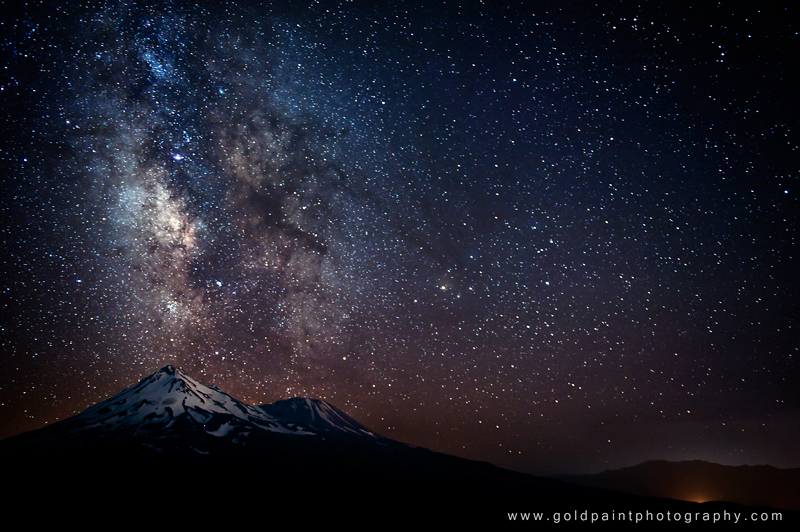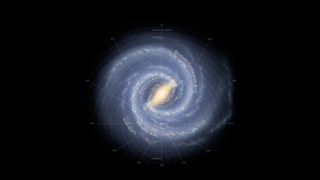
The Milky Way galaxy, home of Earth's solar system, may actually be only half as massive as currently thought, scientists say.
Stars in the far outer reaches of the Milky Way, between 260,000 and 490,000 light-years from the galactic center, are cruising around surprisingly slowly, researchers found. Galactic mass and star velocities are linked, so the results could have big implications.
"Because these velocities are so low, the mass of our galaxy may be much lower than we once thought," lead author Alis Deason, of the University of California, Santa Cruz, told reporters Wednesday (Jan. 9) at the 221st meeting of the American Astronomical Socity in Long Beach, Calif.
"If we infer the properties of the stars that we think are reasonable, then we find the mass of the Milky Way could be half as massive as we currently believe," added Deason, who performed the research while at the University of Cambridge in England. [Stunning Photos of Our Milky Way Galaxy]
The Milky Way is composed of three main parts: a central bulge, a relatively flat disk and a roughly spherical surrounding halo.
Deason and her team looked far out into the Milky Way's halo, which extends far beyond the 100,000-light-year-wide disk. They measured the radial velocities of a sample of distant halo stars using two different instruments: the European Southern Observatory's 8.2-meter telescope in Chile and the 4.2-meter William Herschel Observatory in Spain.
They found that the dispersion, or spread, of halo-star velocities was about half that seen for stars closer to the galactic center.
Get the Space.com Newsletter
Breaking space news, the latest updates on rocket launches, skywatching events and more!
"This was quite a surprise when we found this," Deason said.
Using this information, the team calculated that the total mass of the Milky Way out to such extreme distances may be between 500 billion and 1 trillion times that of our sun — substantially lower than the current leading estimate, Deason said.

"The problem is, we are really in unknown territory," Deason said. "We are assuming properties of these stars that are the same in the inner parts of the galaxy. And this is something that really needs to be verified, what we're assuming, in terms of their density profile and also what their orbits are like."
Future work along these lines could help astronomers map the distribution of mass throughout the Milky Way, Deason said, potentially shedding light on the mysterious dark matter that is thought to make up more than 80 percent of all matter in the universe.
"I think we will be able to use measurements like this to not only say what the total mass is, but also if the dark matter distribution is what we expect," she said. "At the moment, we just don't know."
Follow SPACE.com senior writer Mike Wall on Twitter @michaeldwall or SPACE.com @Spacedotcom. We're also on Facebook and Google+.
Join our Space Forums to keep talking space on the latest missions, night sky and more! And if you have a news tip, correction or comment, let us know at: community@space.com.

Michael Wall is a Senior Space Writer with Space.com and joined the team in 2010. He primarily covers exoplanets, spaceflight and military space, but has been known to dabble in the space art beat. His book about the search for alien life, "Out There," was published on Nov. 13, 2018. Before becoming a science writer, Michael worked as a herpetologist and wildlife biologist. He has a Ph.D. in evolutionary biology from the University of Sydney, Australia, a bachelor's degree from the University of Arizona, and a graduate certificate in science writing from the University of California, Santa Cruz. To find out what his latest project is, you can follow Michael on Twitter.